-
Introduction
Rajasthan, known for its vast deserts, grand palaces, and vibrant culture, transforms into a mystical land during the monsoon. The rain-soaked landscapes breathe new life into the otherwise arid state, revealing a lesser-known facet of its heritage—the ancient stepwells. These architectural marvels, once vital for water conservation, become enchanting sites to explore when the monsoon rain fills their deep wells and intricate carvings with life. This blog takes you on a journey through the rain-washed stepwells of Rajasthan, uncovering their historical significance, aesthetic beauty, and the unique experience they offer during the monsoon season.
-
The Monsoon Magic in Rajasthan
2.1 The Climate and Atmosphere
Rajasthan’s harsh summer heat gives way to a refreshing coolness as the monsoon clouds roll in. The state’s parched land, thirsting for rain, bursts into vibrant hues of green, and the air fills with the earthy scent of wet soil. This transformation not only alters the landscape but also the mood of the people, bringing festivals, fairs, and a sense of celebration. The temperature drops, making it a perfect time for exploring outdoor monuments and natural wonders.
2.2 Significance of Monsoon in Rajasthani Culture
Monsoon holds a special place in the hearts of the Rajasthani people. It is a time for rejoicing, marked by traditional dances like the Ghoomar and Kalbeliya, as well as folk songs that celebrate the arrival of rain. The rain is seen as a blessing, essential for the crops and the general well-being of the land. This season is also deeply tied to the region’s spirituality, with rituals and ceremonies conducted to honor the gods for the much-needed rain.
-
Ancient Stepwells: Architectural Marvels
3.1 Understanding Stepwells
Stepwells, known locally as “baoris” or “kunds,” are unique to the Indian subcontinent, particularly in Rajasthan and Gujarat. These structures are not just wells but architectural wonders designed to access water from deep underground sources. They consist of a series of steps leading down to the water, often intricately carved with sculptures of deities, mythological scenes, and geometric patterns.
3.2 The Historical Importance of Stepwells
Historically, stepwells served multiple purposes. They were a critical source of water, especially in arid regions, and acted as cool retreats during the scorching summer months. Beyond their practical use, stepwells were also places of social gathering, spiritual practice, and even trade. Kings and queens commissioned many of these wells, not just as a public utility but as an expression of their power, piety, and architectural patronage.
-
The Role of Stepwells During Monsoons
4.1 Water Conservation and Storage
In Rajasthan, where water scarcity is a constant challenge, stepwells were ingeniously designed to store and conserve rainwater during the monsoon. The rain would fill the wells, providing a crucial water supply throughout the year. The structure of the stepwells, with their descending staircases, allowed easy access to water as its levels fluctuated.
4.2 Cultural and Social Hubs
During the monsoon, stepwells became more than just reservoirs; they were vibrant social hubs. People from nearby villages would gather to celebrate the arrival of rain, perform religious rituals, and participate in community events. The stepwells’ cool, shaded interiors provided a respite from the heat, making them ideal locations for socializing and conducting daily activities.
-
Notable Stepwells to Explore
5.1 Chand Baori, Abhaneri
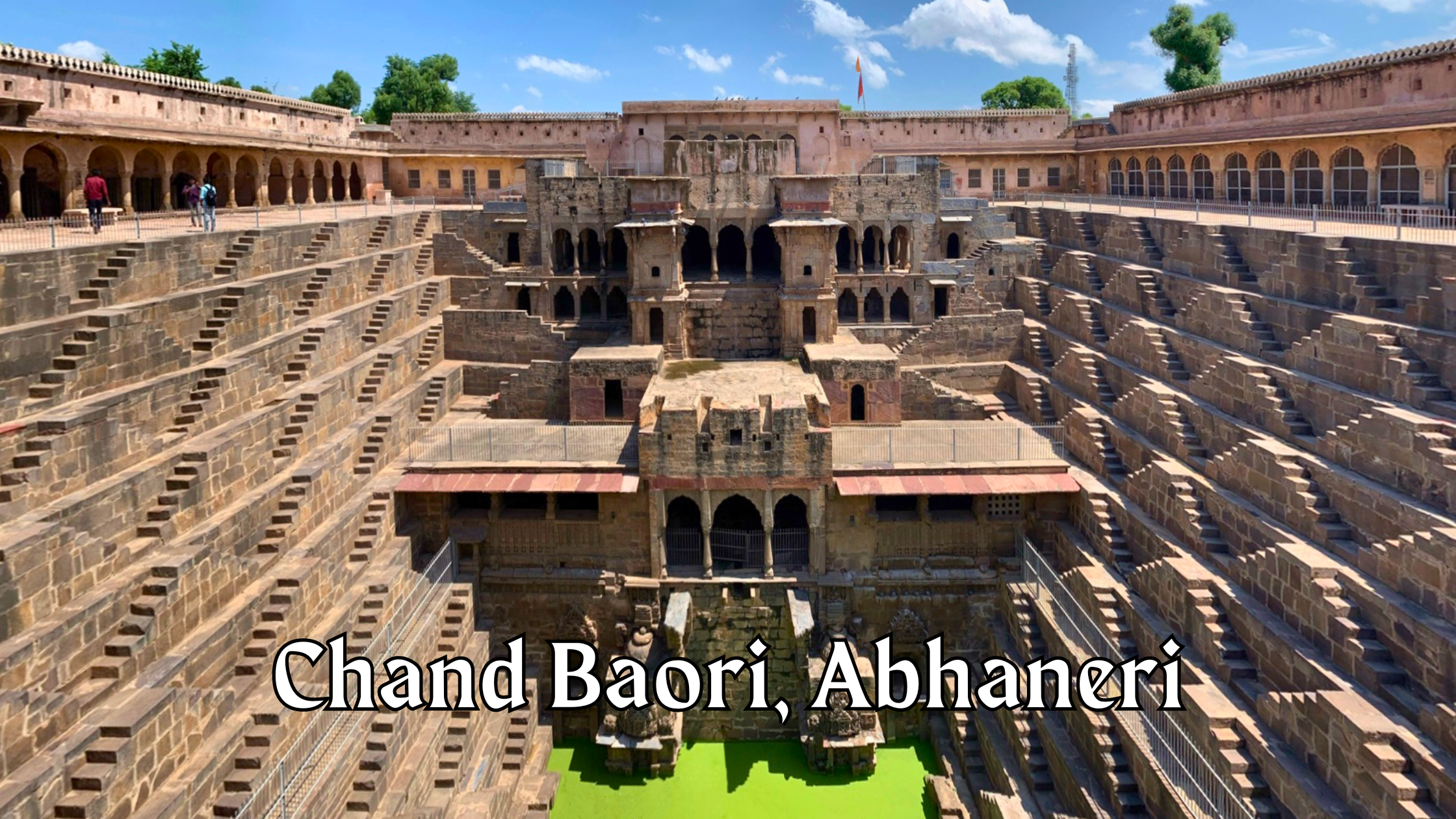
Located in the village of Abhaneri, Chand Baori is one of the most famous and visually stunning stepwells in Rajasthan. Built in the 9th century, this well features 3,500 narrow steps arranged in a perfect symmetry over 13 stories. During the monsoon, the well fills with rainwater, creating a mesmerizing contrast between the dark, deep waters and the stone’s light hues. The surrounding temple dedicated to Harshat Mata adds a spiritual aura to the site.
5.2 Raniji ki Baori, Bundi
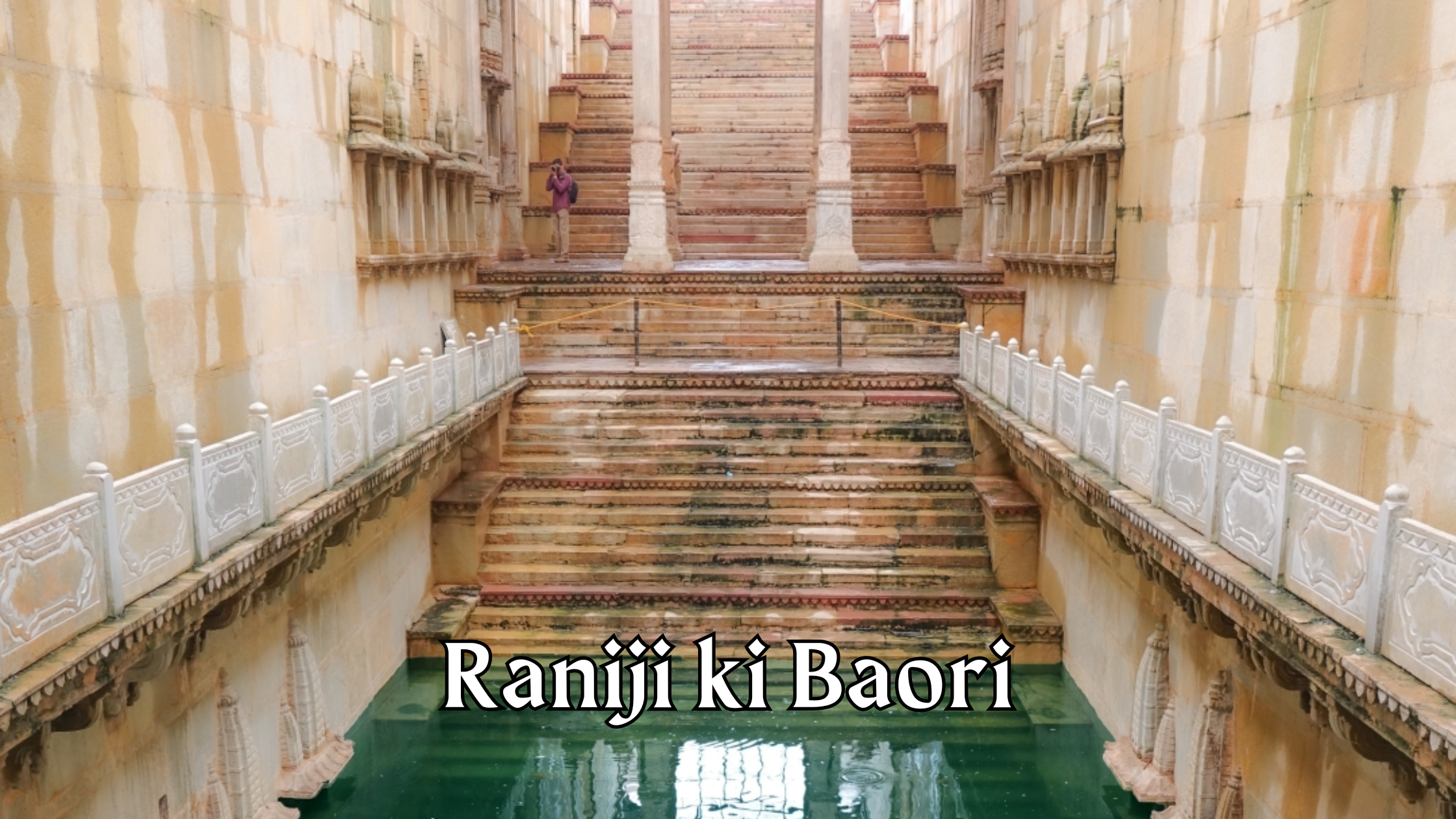
Bundi, often referred to as the city of stepwells, is home to numerous baoris, with Raniji ki Baori being the most notable. Built in the 17th century by Rani Nathavati, this well is adorned with ornate pillars and arches, making it a splendid example of Rajput architecture. During the monsoon, the lush greenery around the well contrasts beautifully with its stone structure, creating a perfect blend of nature and architecture.
5.3 Panna Meena ka Kund, Jaipur
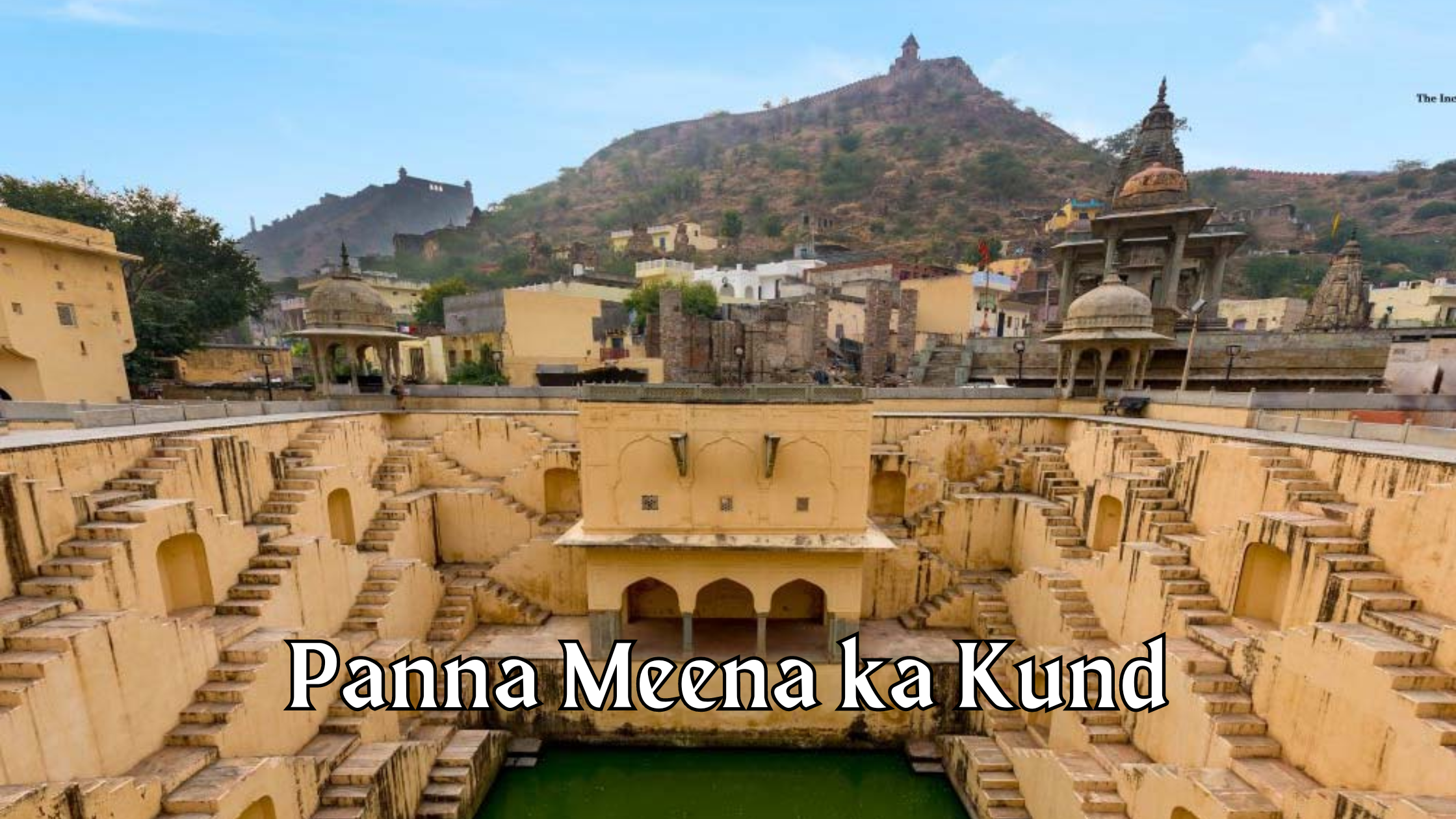
Nestled in the shadow of Amber Fort, Panna Meena ka Kund is an eight-story stepwell known for its unique geometric design. The symmetrical pattern of steps creates a stunning visual effect, especially during the monsoon when the well is filled with water. This stepwell is less crowded than others, offering a peaceful experience where one can sit by the steps and soak in the serene ambiance.
5.4 Toorji ka Jhalra, Jodhpur
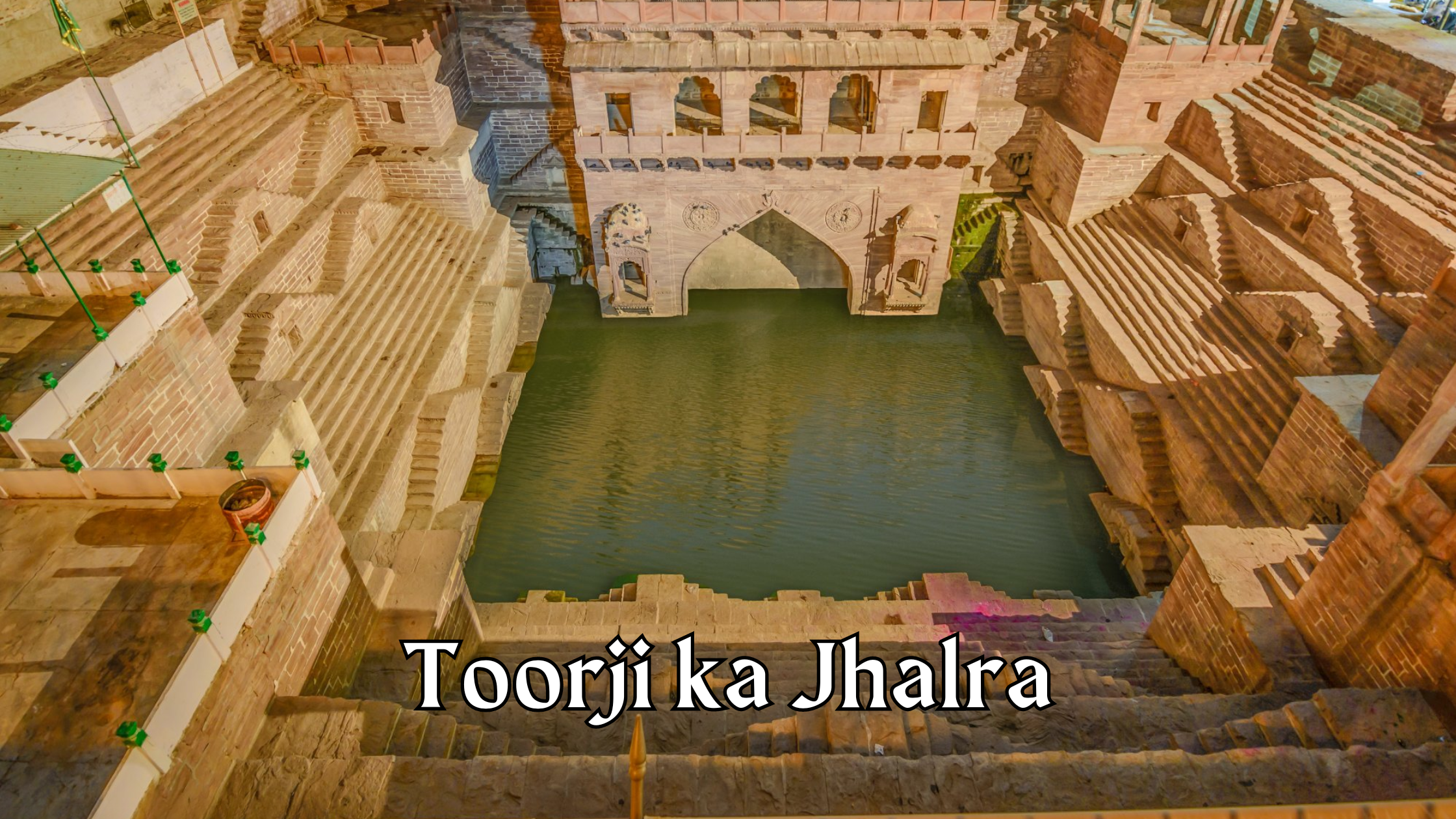
Toorji ka Jhalra, located in the Blue City of Jodhpur, is another marvel that comes alive during the monsoon. Built in the 18th century, this stepwell showcases the skill of the artisans of the Marwar region. The well’s deep structure is lined with beautiful carvings, and during the rains, it becomes a picturesque spot reflecting the vibrant blue houses of Jodhpur.
5.5 Hadi Rani Ki Baori, Tonk
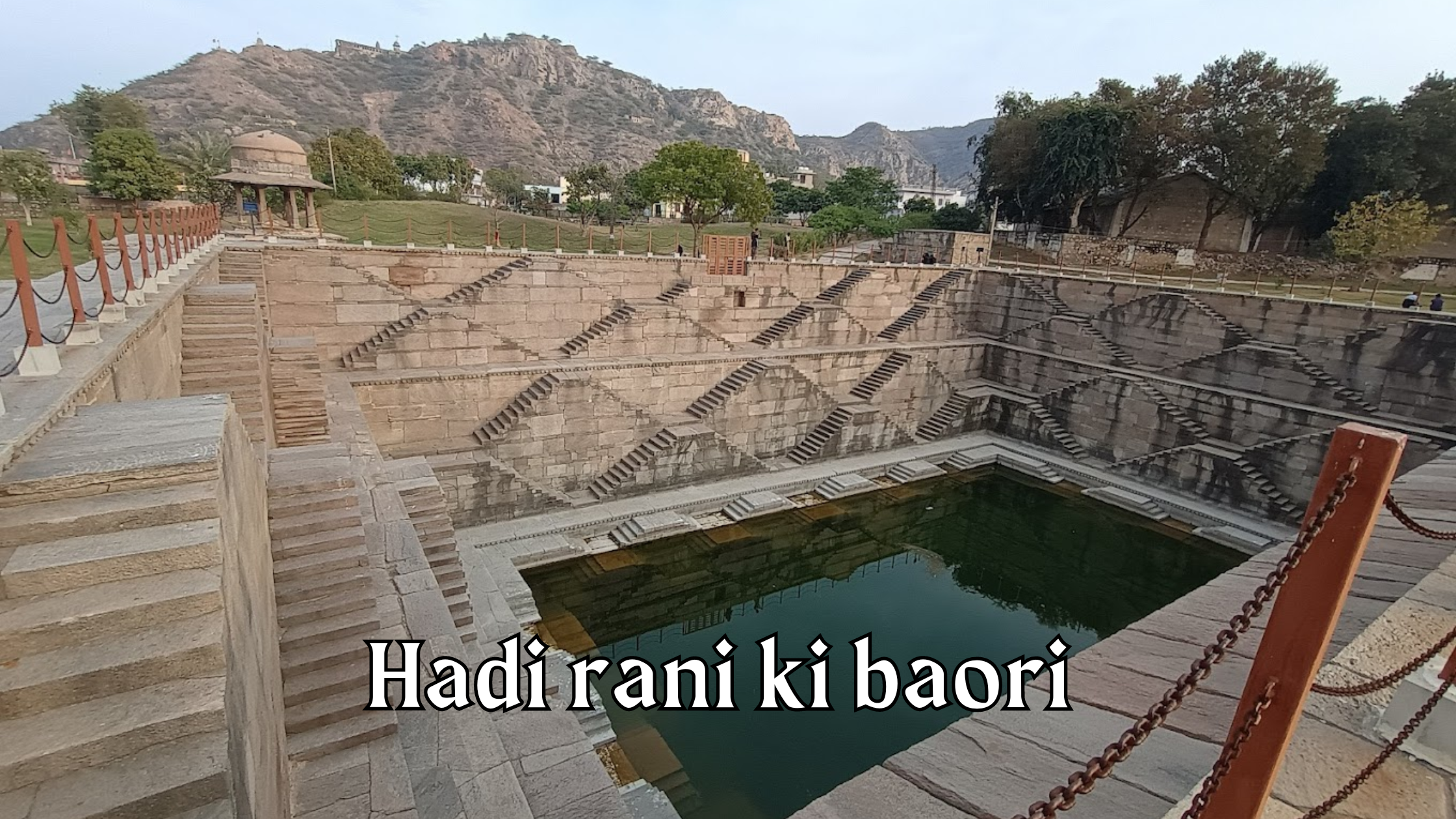
Hadi Rani Ki Baori is a historic stepwell located in the town of Todaraisingh in the Tonk district of Rajasthan, India. Believed to have been constructed in the 17th century, this stepwell is rectangular in shape and features two-story corridors on one side. Each corridor is adorned with arched doorways, and beneath the lower level, there are statues of Brahma, Ganesha, and Mahishasuramardini. This architectural marvel is a testament to the intricate craftsmanship and cultural heritage of the region.
-
The Aesthetic Transformation During Monsoon
6.1 The Visual Splendor of Rain-soaked Stepwells
The monsoon rain transforms the stepwells into breathtaking sights. The rainwater fills the wells, creating deep, reflective pools that mirror the sky above. The wet stones glisten, and the carvings seem to come alive as they are washed clean by the rain. The surrounding vegetation, rejuvenated by the rain, adds a lush backdrop to the scene, making the stepwells appear as if they are part of a forgotten, enchanted world.
6.2 The Sound of Raindrops in Stepwells
There is something uniquely soothing about the sound of raindrops falling into a stepwell. The acoustics of these ancient structures amplify the gentle patter of rain, creating a symphony of natural sounds. This auditory experience is one of the hidden pleasures of visiting stepwells during the monsoon, adding to the overall serenity and mystical atmosphere of these sites.
-
Stepwells as Filming Locations
7.1 Bollywood’s Love Affair with Stepwells
The dramatic architecture of stepwells has not gone unnoticed by filmmakers. Bollywood, in particular, has used these locations to add a historical or mysterious touch to films. Movies like “Paheli” and “Bhool Bhulaiyaa” have featured stepwells prominently, using their intricate designs and deep wells to create a sense of wonder and intrigue.
7.2 International Productions Featuring Stepwells
Stepwells have also caught the eye of international filmmakers. The famous Chand Baori, for example, was featured in the Hollywood film “The Dark Knight Rises.” The well’s dramatic descent into darkness provided the perfect setting for one of the film’s key scenes, showcasing the global appeal of these ancient structures.
-
Stepwells and Local Legends
8.1 Myths and Folklore
Stepwells are steeped in local myths and folklore. Many are believed to be haunted or inhabited by spirits, and stories of mysterious occurrences are passed down through generations. These tales add an element of mystery to the stepwells, making them even more intriguing to explore.
8.2 Famous Legends Tied to Specific Stepwells
Certain stepwells are particularly famous for the legends associated with them. For instance, Chand Baori is said to have been built overnight by ghosts, while Rani ki Vav is believed to have been a secret passage for royalty. These stories, whether fact or fiction, add to the rich cultural tapestry of Rajasthan’s stepwells.
-
Preservation Efforts
9.1 The Need for Conservation
Despite their historical and cultural significance, many of Rajasthan’s stepwells have fallen into disrepair. Neglect, urbanization, and lack of awareness have led to the deterioration of these architectural gems. Conservation efforts are crucial to preserving these sites for future generations, as they are not only part of Rajasthan’s heritage but also play a role in water conservation.
9.2 Ongoing Restoration Projects
Various organizations and government bodies are working to restore and maintain these ancient structures. Efforts include cleaning the wells, repairing damaged steps and carvings, and improving access for tourists. These projects aim to not only preserve the physical structure of the stepwells but also to revive their cultural significance by promoting them as tourist attractions.
-
Planning Your Monsoon Visit
10.1 Best Time to Visit
The best time to explore Rajasthan’s stepwells during the monsoon is between July and September. During this period, the rains are frequent but not overpowering, allowing you to enjoy the cool, damp atmosphere of the stepwells without getting drenched. Early mornings or late afternoons are ideal times to visit, as the light is perfect for photography and the temperatures are comfortable.
10.2 Travel Tips for Monsoon Exploration
When visiting stepwells during the monsoon, it’s important to wear sturdy, non-slip footwear, as the steps can be slippery when wet. Carry an umbrella or a raincoat, and be mindful of the weather conditions, as heavy rains can sometimes cause flooding. It’s also advisable to check the accessibility of certain stepwells in advance, as some may be temporarily closed during the peak of the monsoon.
-
Responsible Tourism
11.1 Eco-friendly Travel Practices
While exploring Rajasthan’s stepwells, it’s important to practice responsible tourism. Avoid littering, and make an effort to minimize your environmental impact by using eco-friendly products and reducing waste. Supporting local guides and businesses not only enriches your experience but also contributes to the local economy and encourages the preservation of these sites.
11.2 Supporting Local Communities
Many of the areas surrounding the stepwells are home to small, rural communities that rely on tourism for their livelihood. By purchasing local crafts, eating at local restaurants, and engaging with community-run tours, you can directly contribute to the well-being of these communities. This, in turn, helps sustain the cultural heritage of the stepwells and promotes their continued preservation.
-
Photography Tips for Stepwells
12.1 Capturing the Monsoon Vibe
Monsoon is a fantastic time for photography, as the overcast skies provide a soft, diffused light that enhances the details of the stepwells. To capture the monsoon atmosphere, focus on the reflections in the water, the contrast between the wet stones and the greenery, and the play of light and shadow within the deep wells.
12.2 Best Angles and Lighting
Stepwells offer numerous opportunities for creative photography. Wide-angle shots can capture the full grandeur of the well’s design, while close-ups highlight the intricate carvings. Experiment with different angles to find the most dramatic perspectives, and take advantage of the natural light at different times of the day to achieve the best results.
-
Culinary Delights During the Monsoon
13.1 Traditional Rajasthani Monsoon Snacks
The monsoon season in Rajasthan is also a time for enjoying traditional snacks that complement the cool, rainy weather. Delicacies like “dal baati churma,” “pakoras,” and “kadhi” are popular during this time. Many local eateries near stepwells offer these dishes, providing a perfect end to a day of exploration.
13.2 Local Cuisine Near Stepwells
Rajasthan’s stepwells are often located near towns and villages that boast rich culinary traditions. After visiting a stepwell, indulge in local cuisine at nearby restaurants or street stalls. Whether it’s the spicy “laal maas” or the sweet “ghewar,” the flavors of Rajasthan are sure to enhance your monsoon experience.
-
The Spiritual Aspect of Stepwells
14.1 Rituals and Ceremonies
Many stepwells in Rajasthan have a spiritual significance and are associated with various rituals and ceremonies. During the monsoon, these sites are often the venue for religious events, where locals gather to pray for good harvests and prosperity. The wells themselves are considered sacred, with some believed to be blessed by gods and goddesses.
14.2 The Sacred Geometry of Stepwells
The design of stepwells often incorporates sacred geometry, with specific patterns and proportions intended to align with cosmic principles. This adds a spiritual dimension to the architectural beauty of the stepwells, making them not just functional structures but also places of meditation and contemplation.
Exploring Rajasthan’s ancient stepwells during the monsoon is a journey through time and culture. These architectural wonders, transformed by the rain, offer a unique experience that blends history, spirituality, and natural beauty. Whether you’re a history buff, a photography enthusiast, or simply someone who enjoys discovering hidden gems, the stepwells of Rajasthan during the monsoon are sure to leave you mesmerized. As you traverse these rain-washed pathways, you’ll gain a deeper appreciation for the ingenuity and artistry that went into creating these magnificent structures.


